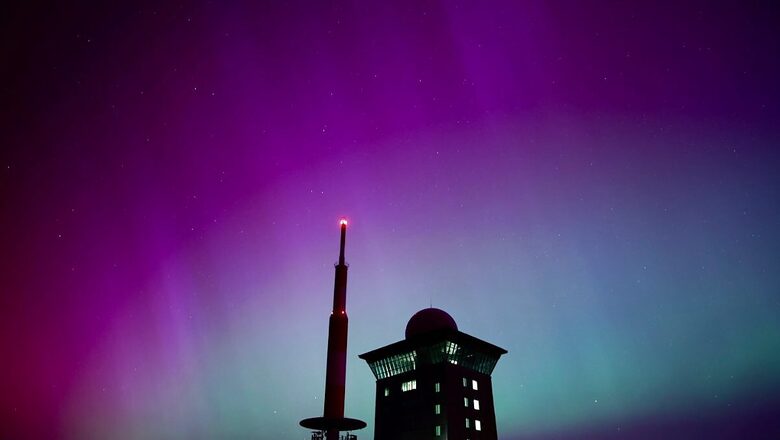
views
An ‘extreme’ solar storm struck Earth raising concerns over its potential to disrupt power and communications.
The unusually strong solar storm also produced spectacular celestial light shows from Tasmania to Britain and Canada to the US as it produced northern lights which were seen by residents in areas where they usually do not see them.
Absolutely biblical skies in Tasmania at 4am this morning. I’m leaving today and knew I could not pass up this opportunity for such a large solar storm. Here’s the image. I actually had to de-saturate the colours. Clouds glowing red. Insane. Shot on Nikon. Rt appreciated pic.twitter.com/210hlkmoeg— Sean O' Riordan (@seanorphoto) May 10, 2024
The National Oceanic and Atmospheric Administration (NOAA) issued a rare severe geomagnetic storm warning after a solar outburst reached Earth on Friday afternoon. The burst came sooner than expected and its effects will last through the weekend and possibly into next week.
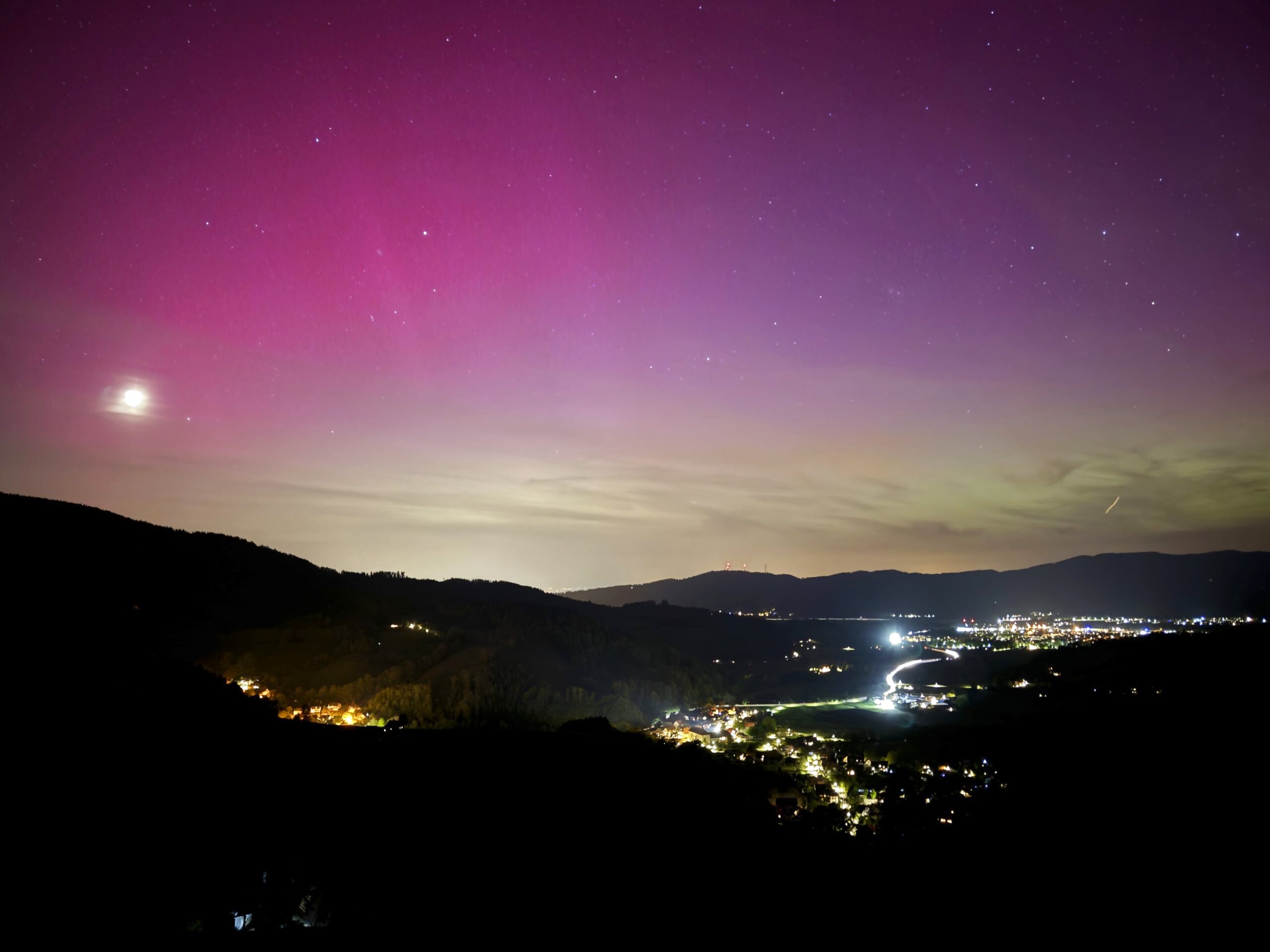
The American agency alerted operators of power plants and spacecraft in orbit to take precautions, as well as the Federal Emergency Management Agency.
“For most people here on planet Earth, they won’t have to do anything,” said Rob Steenburgh, a scientist with NOAA’s Space Weather Prediction Center.
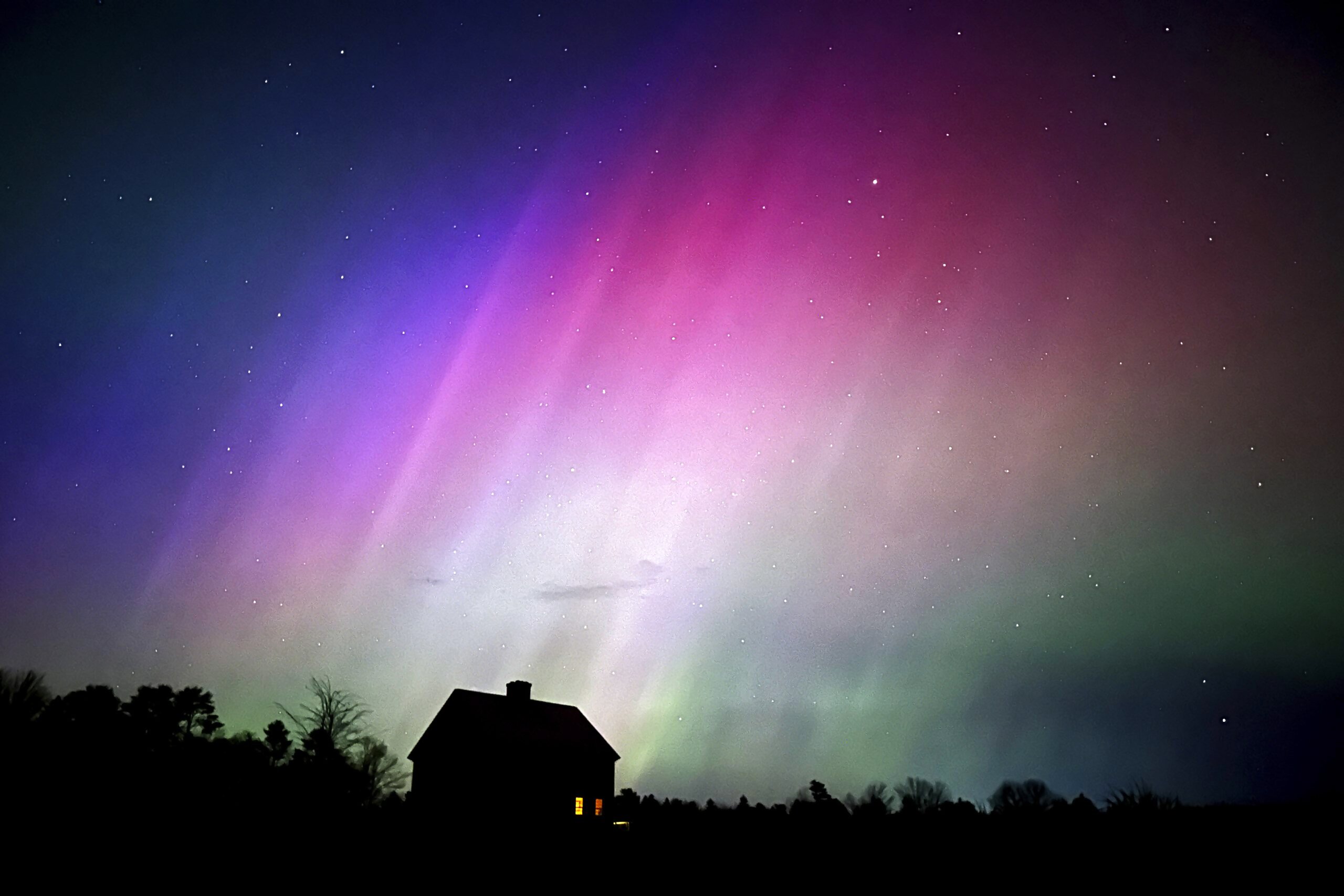
The storm produced northern lights as far south in the US as Ohio and northern lights were also seen in Canada’s Ontario, according to NOAA.
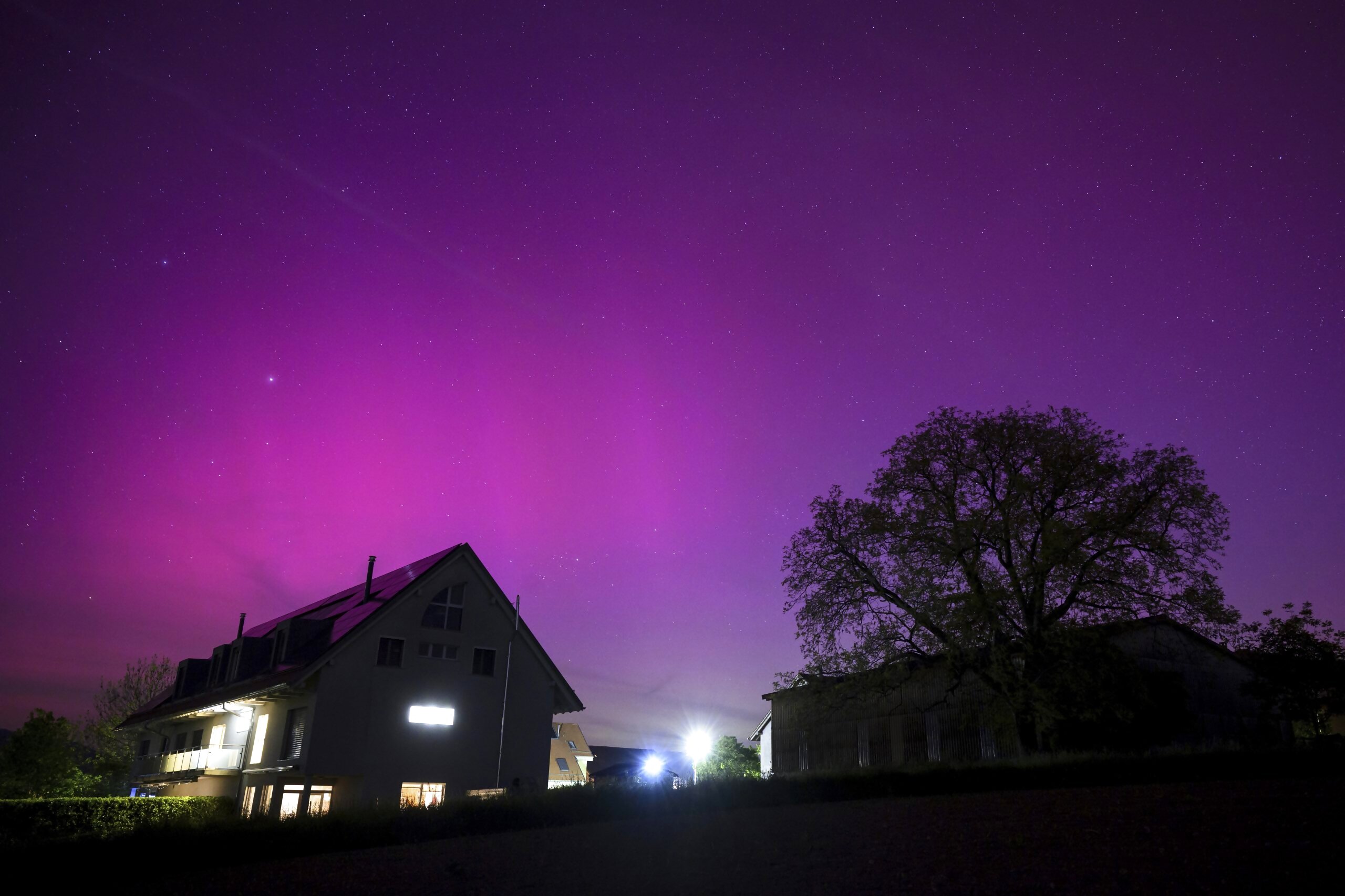
Northern lights were also visible in Scotland and adjoining areas like England’s Hertford. They were also visible in Germany and Switzerland. Social media lit up with people posting pictures of auroras from northern Europe and Oceania.
“We’ve just woken the kids to go watch the Northern Lights in the back garden! Clearly visible with the naked eye,” Iain Mansfield in Hertford, England, told AFP.
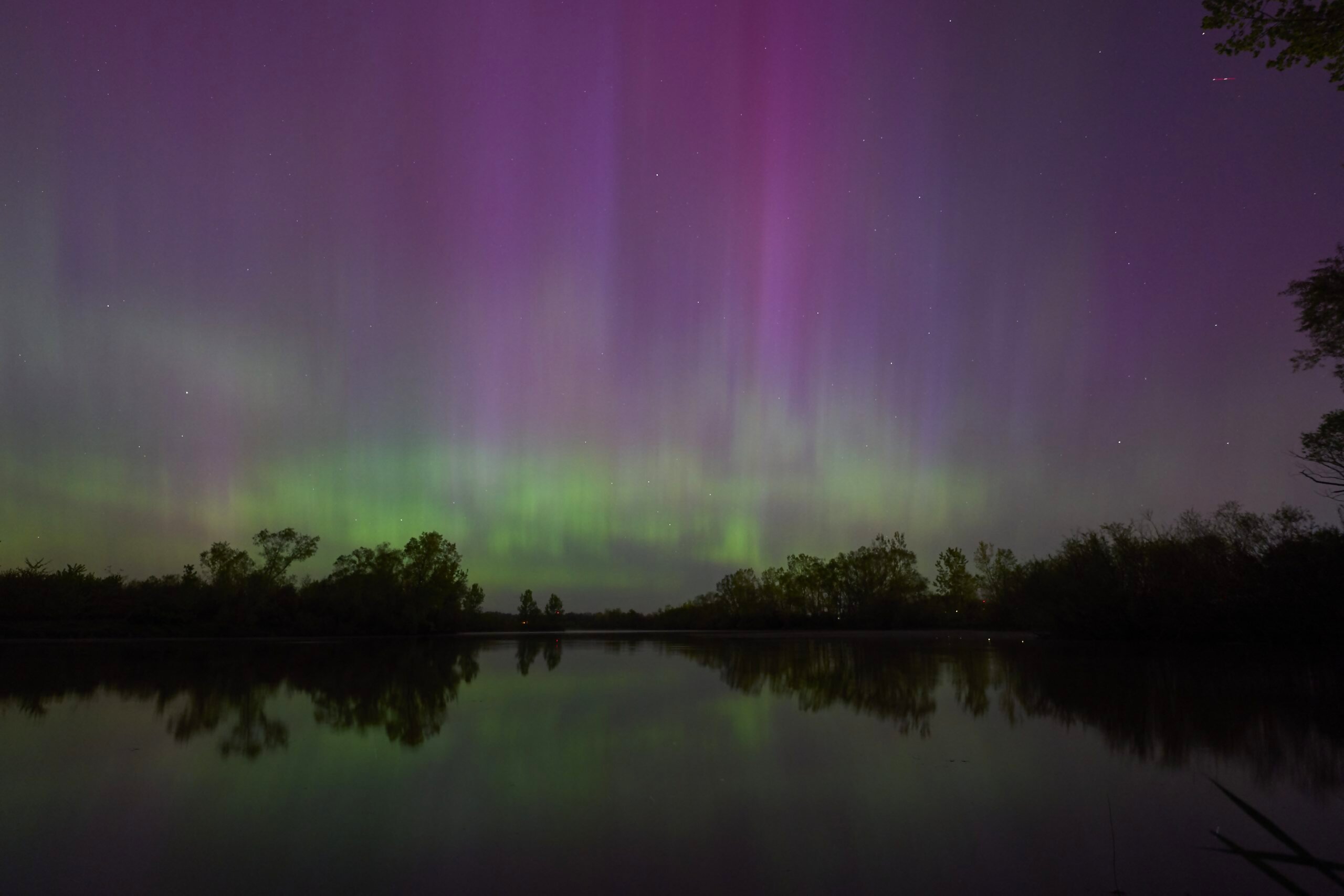
That sense of wonder was shared in Australia’s island state of Tasmania.
“Absolutely biblical skies in Tasmania at 4am this morning. I’m leaving today and knew I could not pass up this opportunity,” photographer Sean O’ Riordan posted on social media platform X alongside a photo.
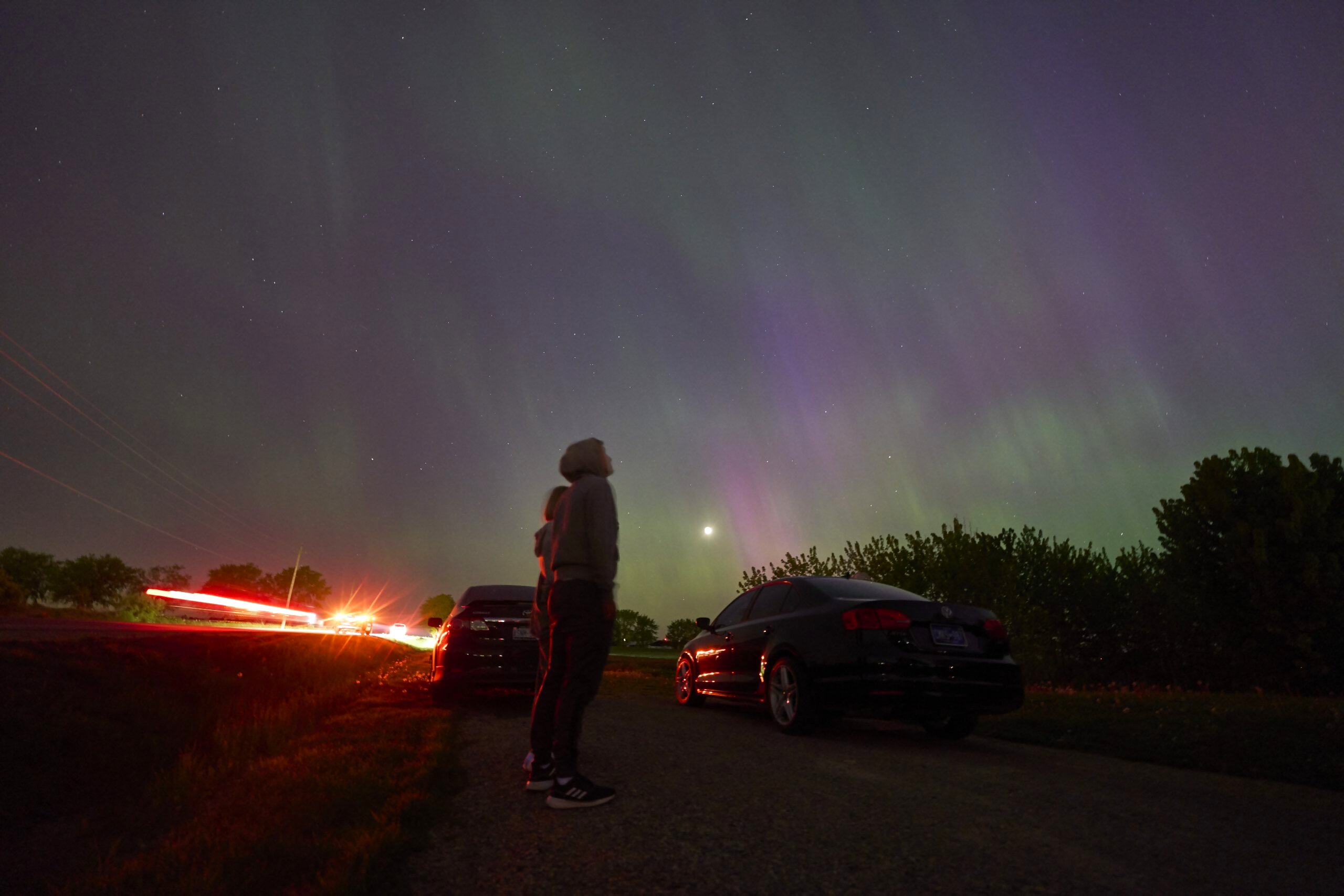
“That’s really the gift from space weather — the aurora,” said Steenburgh while speaking to the Associated Press.
He and his colleagues said the best aurora views may come from phone cameras, which are better at capturing light than the naked eye.
Half Moon and Northern lights #northernlights #auroraborealis #aurora #nature #norway #travel #iceland #naturephotography #photography #finland #northernlightsphotos #ig #lapland #travelphotography #nightphotography #nightsky #landscape #winter #snow #night #auroraboreale… pic.twitter.com/mz7aejU6hy— I N F O R M A T I V E (@INFO_10000) May 10, 2024
Snap a picture of the sky and “there might be actually a nice little treat there for you,” said Mike Bettwy, operations chief for the prediction center.
The most intense solar storm in recorded history, in 1859, prompted auroras in central America and possibly even Hawaii.
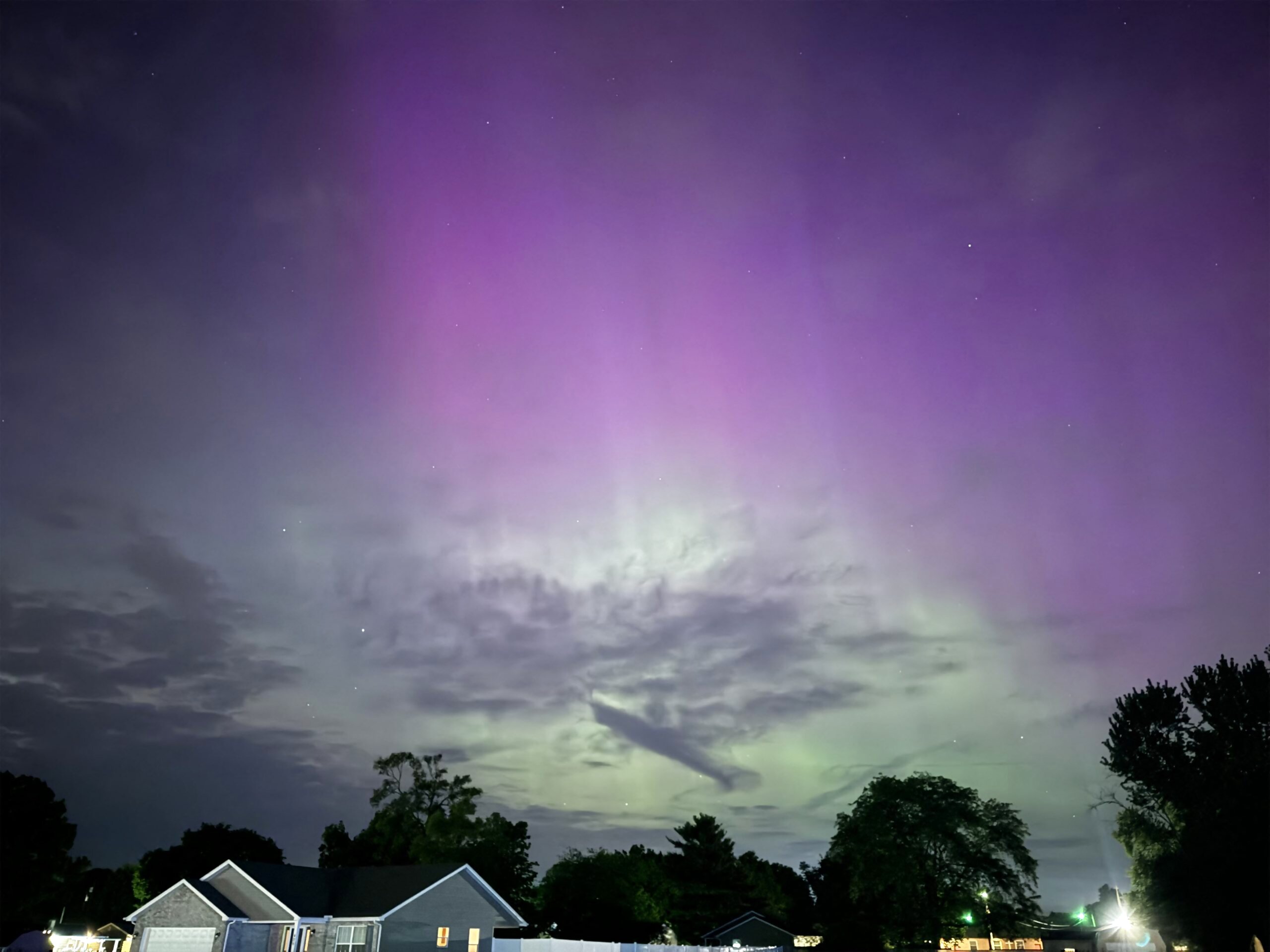
This storm poses a risk for high-voltage transmission lines for power grids, not the electrical lines ordinarily found in people’s homes, NOAA space weather forecaster Shawn Dahl told reporters. Satellites also could be affected, which in turn could disrupt navigation and communication services here on Earth.
An extreme geomagnetic storm in 2003, for example, took out power in Sweden and damaged power transformers in South Africa.
Even pigeons and other species that have internal biological compasses could also be affected. Pigeon handlers have noted a reduction in birds coming home during geomagnetic storms, according to NASA’s Jet Propulsion Laboratory.
The most powerful geomagnetic storm in recorded history, known as the Carrington Event after British astronomer Richard Carrington, occurred in September 1859.
The sun has produced strong solar flares since Wednesday, resulting in at least seven outbursts of plasma. Each eruption — known as a coronal mass ejection — can contain billions of tons of plasma and magnetic field from the sun’s outer atmosphere, or corona.
The flares seem to be associated with a sunspot that’s 16 times the diameter of Earth, according to NOAA. It’s all part of the solar activity that’s ramping up as the sun approaches the peak of its 11-year cycle.
NASA said the storm posed no serious threat to the seven astronauts aboard the International Space Station.


















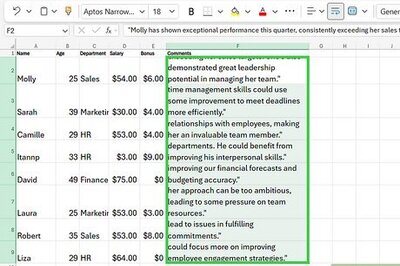

Comments
0 comment